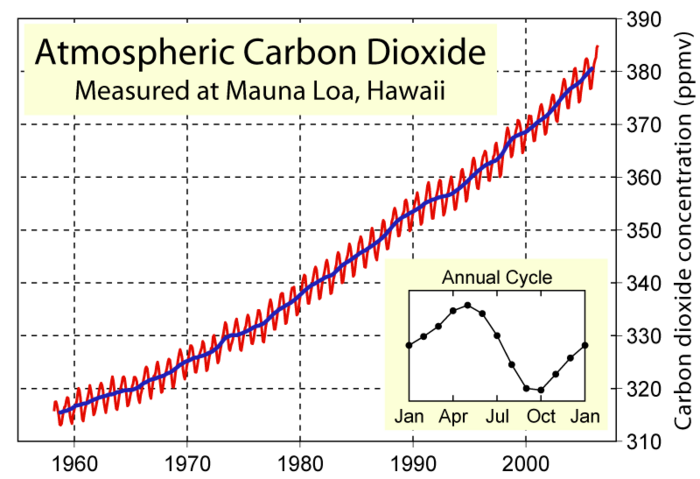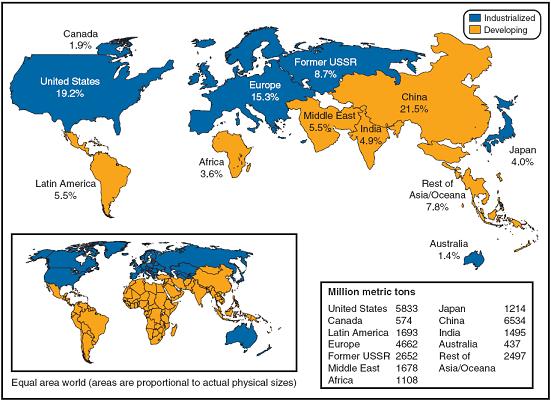Dickinson to Durban » Environmental Politics » The Blame Game
The Blame Game
As a student of environmental studies, it is impossible for me to lay the blame of current global warming/climate change on anyone other than myself and my fellow human beings on this planet. Over and over,skeptics, regulation-weary industries, and politically minded scientists have done their best to dispute the fact that the change in global temperature is a natural occurrence, or is only temporary. 
However, after decades of research and speculations, the advancement of technology has allowed us to prove that, without a doubt, climate change is occurring and that we are the ones responsible for this change. One of the most famous representations depicting anthropogenic contribution to global warming is the Keeling Curve. This curve shows the annual readings of CO2 from Mauna Loa,Hawaii since 1958 (more information found here).
Alright, so we are causing climate change…now what? Every person on earth is in some way responsible for global warming, but who will be responsible for making it stop? There is no way for us to tackle this issue in an individual nation-state way. We must cross our borders and come together to solve the issues of climate change. As if this is not difficult enough (what with politics and power getting in the way), I neglected to point out that although we are all responsible for global warming, we do not all share the same responsibility in our total contribution to it.

Depicts areas of the world which are distorted in relation to their total carbon dioxide emissions. (Bova, 2009)
In 1992, the UNFCCC proposed to handle this difference in responsibility by dividing the COP into two groups, annex one and two. Annex one consisted of developed countries, and annex two were developing countries (plus china). This reasoning behind this system is described by Bulkeley and Newell,
“…climate change has the potential to further aggravate inequalities between societies…Those who have contributed least to the problem of climate change in the past, including most of the world’s poor, are those most susceptible to its worst effects now and in the future. Meanwhile, richer countries are better placed to adapt to the climate impacts that they will suffer.”
This is not to say, however, that in the future, non-annex 1 parties will not become more developed and, thus, more equal in their contribution to global GHG emissions. Among poorer countries, food production will need to double in the next 30 years to keep up with demand, wood burning for fuel will double in 50 years, and 1.6 billion people are currently without power, meaning demand for electricity will skyrocket in developing nations (Bulkeley and Newell, 2011).
But for now, annex 1 nations will have to ignore this future and give those in non-annex 1 assistance as they work to protect themselves against the threats posed by global warming. In the future this assistance will likely change, because although it may not be equal, we all share in the responsibility of causing and reversing the effects of global warming on our planet.
Works Cited
Bova, R. 2009. How the World Works: A Brief Survey of International Relations. Pearson Longman Publishing, USA. Chapter 8 pp. 248.
Bulkeley, H., and P. Newell, 2010. Governing Climate Change. Routledge, New York. pp. 35-53.
Filed under: Environmental Politics · Tags: Bulkeley and Newell, Dani Thompson, Developed Countries, Developing Countries, Russell Bova, UNFCCC








Recent Comments